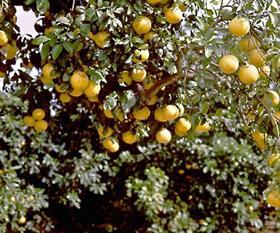
South Africa’s total grapefruit export volume is likely to be down 23 per cent on last year and exporters report a general shortage to supply customers in all export markets.
Last year the country exported 15.3m cartons and the latest prediction for 2012 has now dropped below 12m cartons. “It will all be over very soon,” said Mari Yanagawa of Lona. “It is not only the markets of the East which are suffering with lower volumes than the actual demand, but we have problems supplying all our customers around the world.”
An early end to the South African grapefruit season was inevitable when it was announced smaller than expected fruit sizes dominated the 2012 crop. This resulted in more fruit than usual being sent to processors with the international markets that prefer bigger fruit losing out.
Core Fruit’s Nico van Staden said limited volumes were expected to transfer into a stronger price structure and despite the smaller export volumes this sector of the industry is expected to do well.
Both Yanagawa and van Staden agree that the early market for South African navels will be very tough. “The overhang from Egyptian and Californian Valencias will make things difficult for us,” said Yanagawa. Whilevan Staden saidEgypt was increasingly in South Africa’s early market for oranges. “While this is particularly affecting our sales in Russia and the Middle East, this has also put pressure on our other markets.”
South Africa is expected to dominate the Southern Hemisphere supply of citrus from now until the end of the year. With competitive supplies expected to diminish, the success of the season will be determined by how effectively the South African exporters manage supply and demand.
“While South Korea is the main destination for US citrus, South African citrus has never really taken off in that country,” says Justin Chadwick of the Citrus Growers Association. “It could be due to the higher duties faced by South African produce, or the competition posed by locally grown fruit. The growth in US imports indicates an appetite for imported citrus that should not be ignored.”
Chadwick says the fact that South African exports are pre-cleared with a Korean inspector resident in the country for the entire season, makes the programme expensive. “Increasing the volumes to be cleared would mean lower per carton costs.”
What is also interesting is that Chile is growing its volumes into that market. Also relevant is that the US exported both grapefruit and lemons to Korea – and given South Africa’s recent access for these products there could be opportunities in the future.



